 Ross Gilmore has a very popular blog, Wood Trekker, of which we have had listed in our Blog Roll since our inception. He recently tagged Master Woodsman for the The Liebster Award. Thank you Ross. Per Ross’ take on the award:
Ross Gilmore has a very popular blog, Wood Trekker, of which we have had listed in our Blog Roll since our inception. He recently tagged Master Woodsman for the The Liebster Award. Thank you Ross. Per Ross’ take on the award:
The award is bestowed by bloggers on other bloggers and intended to allow people to learn more about each blogger and lead people to new content. Each person can ask eleven questions to eleven other bloggers, and so on. In effect, it is a tagging game designed to spread awareness of different blogs within a field…
While the responses below are from those who are most heavily involved with Master Woodsman, we would like to remind you this website is here for anyone wanting to contribute. Here are Ross’ great questions and our answers:
1. Who are some of the people in the outdoor community, either past or present who you either consider mentors, or from whom you have gained knowledge about the outdoors, or inspiration to get out there?
Steve Watts: To start listing my contemporaries in the field who have taught/influenced me would be a fool’s effort. I try to learn from everybody…students as well a teachers. Any list would invariably omit persons who should not be omitted. So, I’ll let that one lie. Dropping back in time, the list gets easy. My father first took me to the woods. He was my scout master and my primary mentor in the outdoors. He had an easy grace about him in the woods…simple camps with complex skills made to look easy. He was my own personal Nessmuk.
Later on it would be Dr. Errett Callahan of Virginia and the late John White of Illinois. These were my mentors in the early days of my professional life in experiential/experimental archaeology. That may not at first seem relevant to outdoor skills, but the study of primitive technology is the study of our ancestors ways and means of living on the earth when “wilderness” was all there was and life was indeed one big, long camping trip. I see outdoor skills as a continuum…from the Stone Age, to historic traditions, to the most contemporary of outdoor practices and gizmos. I feel fortunate to have been schooled in prehistoric campcraft…the basis for all that followed.
Chad Nech: I’m always inspired by my Grandmother. Part Native and born with half a working kidney, she labored hard in the cotton fields of the south. She was a dust bowl and depression survivor that has humbled me with the knowledge of how they survived through such disastrous times. Her family essentially walked from Texas to California after their model A car broke down somewhere in the desert.
She married a WWII vet and moved to Kansas where my story started. As far as traditional outdoor educators goes, I’ll always have a special place in my heart for great minds like Steve Watts and Mors Kochanski.
Chris Noble: A philosophy and ethic came in college from Joel Smith, Dr. Mitch Flinchum, Dr. George Blakeslee, and Dr. Henry Gholz around dendrology, forest ecology and forest health. My forestry education created a unique foundation of how “Mother Nature” works of which later was added man’s intimate interaction in primitive skills and woodcraft from a host of books and those that teach outdoor living skills.
Specifically, I have received lessons and been influenced by Cody Lundin, Mark Warren, Steve Watts, David Wescott, Mors Kochanski and many peers, who like me, are also student and like to share.
2. What is the typical duration of one of your trips, and how much distance do you tend to cover on such trips?
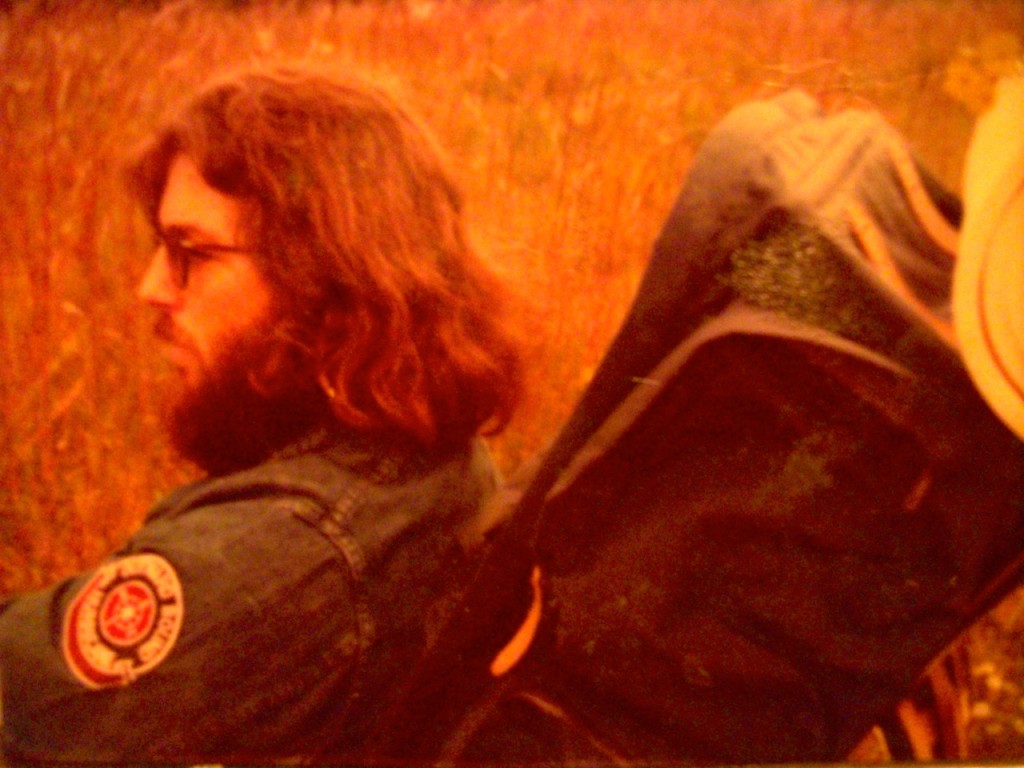
1972 with North Face external frame…it was a great pack with big oversized tubes and one of the first front panel opening models.
Steve Watts: This question seems to refer to backpacking. At age 67, most of my backpacking days are behind me…so, excuse me while I reminisce. I put in the miles during the 1960s, 70s and early 80s…weekends and five or six dayers mostly. I was one of the fortunate ones during those days for whom backpacking was a part of my actual job—leading trips for a retail expedition company and running outdoor adventure programs for youth-at-risk from 1973-1984. It wasn’t always fun, but it provided me with lots of opportunities to be out there year round. I loved the feel of a middle-to-heavy weight load on my back and life on the trail about anywhere. National forests are a precious resource in this country, and were (and are) favorite haunts. I did some AT hiking, but was never a real fan of the crowded trail. I also count long walking/hitchhiking “on the road” trips in the 60s (California, New York, Florida) as part of my outdoor education. My fascination with the true American Hobo of the late 19th/early 20th century was behind a lot of that. The worst among them were just bums. The best among them were campcrafters of renown. It’s not something I would highly recommend these days, but those trips in their proper era were good tests of outdoor living skills and problem solving on the move. Today, I prefer camping in an 18th century frontier style (an important stop on the outdoor skills continuum and a touchstone of personal history and heritage), and outing by car, canoe or a short hike in the Classic Camping style.
Camping in the Golden Age style is where I started out, and it’ll be where I’ll end. It’s an elegant style from an interesting era. It emphasizes campcraft, and it feeds my hunger for history and romance. It’s a time when the skills of the frontier met the modern world of the early 20th century. Those of us who pursue it today have often been referred to by the critics as just “recreational” campers. They’ve got it right! I consider re-creation to be the highest of goals in the outdoors. These trips are mostly weekends to five or six days, and are most often in the guise of some kind of demonstration/teaching venture…efforts to share the beauty and good sense of life under canvas.
Chad Nech: I enjoy traveling to schools, gatherings, and even my own coming-of-age solo trips.
Times always vary depending on what I’m up to. 2 weeks seems to be the longest I can get away and someday I hope to change that with a Jack Mtn Immersion program but in the meantime it’s usually 3-5 days.
I admire the folks who are “full timers” and hope that someday I can lead a similar path.
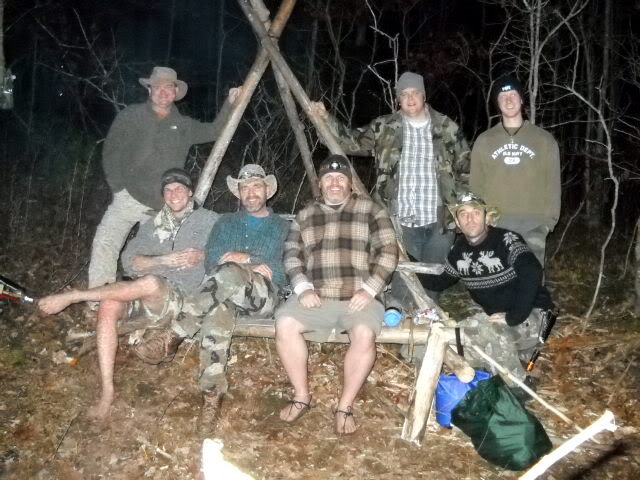 Chris Noble: I have done trips as long as 9 days by canoe and hiked many miles into the backcountry out west in places such as Yellowstone.
Chris Noble: I have done trips as long as 9 days by canoe and hiked many miles into the backcountry out west in places such as Yellowstone.
Here in the east and these days, it’s more overnighters, or 3 days, 2 nights in the Chattahoochee National Forest. Favorite places are roadless blocks of forest which usually involve a protected watershed surrounded by mountains. Getting to the ‘center’ of these areas are typically a 2 mile off-trail hike with several elevation changes. I shy away from established trails. The picture to the left is one of many trips I have led friends off-trail into the NF. This was 1.5 mile hike with 2 big elevation changes. Gabe and I built the ‘Flintstone Chair,’ as Dusty calls it, in 20 minutes. Quite a few folks have slept on it near the fire!
3. What is your favorite instructional book about the outdoors?
Steve Watts: Through time it has always been Horace Kephart’s encyclopedic Camping and Woodcraft. Kephart was the man during the early part of the last century…and agree with him or not, he was a force to be dealt with. I’m also fan of many other writers of the day—Sears, White, Miller, Beard, Seton, etc—the list is long.
During the 70s, I like everyone else, believed that Colin Fletcher was the god of backpacking (and I suppose he was). His The Complete Walker (first edition) was (and is) a classic of the backpacking boom of the day and set countless numbers of us on the trail with good sturdy shorts and red-bootlaced-boots. He had all us all sawing the handles off our toothbrushes and cooking on Svea stoves in tiny cups. And, to top it off, he was a talented and entertaining writer who combined good information with a sense of humor that seems to be lacking in many of today’s offerings.
Chad Nech: I could go on for awhile and thankfully there is GoodReads so you can see my library, but I would say that Ellsworth Jaegers’ Wildwood Wisdom might be my favorite book. I enjoy the great illustrations and the unbiased insight into both Native American and European methodology. I really enjoy Warren H. Miller from the classic camping genre also.
Chris: So not a fair question! I can’t list just one, so I will list one that I believe is not appreciated as much as it should be, perhaps because relatively speaking it is so new. Participating in Nature by Thomas J. Elpel.
4. What is your vision of the woodsman, or the outdoorsman, at least as related to you and what you hope to achieve?
Steve Watts: Well, I’ll never achieve it….for after all, it is an ideal. To me the vision includes a combination of skills, tradition, fun and practiced ease…maybe a combination of Boone, Beard and my father.
Chad Nech: This surely varies for each and every one of us. With so many schools of thought and a visible progression in skills and character, it’s almost impossible to say. Also who’s to say it’s not just an ideology. Does geography play a part? I’ve always considered myself more of a Plainsman.
Chris Noble: I consider myself a practical woodsman, balancing my current skill level in woodcraft and primitive skills with modern technology. Too much ‘gear’ takes you away from a deeper interaction with the environment and doesn’t necessarily make you more comfortable (body or mind). Regardless of the outdoor discipline you subscribe, the bottom line is skills equal comfort. Putting that discipline into context offers greater understanding and potential for growth.
In addition to the appreciation I have for traditional skills, I usually find them to be more practical. Much of the modern gear can’t handle hard or long-term abuse. In particular, (some) modern backpacking equipment is designed with too much focus on weight and packability at the sacrifice of camp-use. Don’t get me wrong, I appreciate and often take advantage of modern technology, I just don’t want to rely on it.
5. Do you hunt, and if so, how do you incorporate that into your trips? If not, is there a specific reason?
Steve Watts: Hunting is at the core of our experience as a species. Hunter/gatherers backpacked and camped across the globe, populating six of the seven continents by 10,000 years ago. They are the hunter/camper heroes of our ancestral past. My last “real” hunting trip involved getting skunked by a few highly evolved turkeys almost 20 years ago. Since then, most of my hunting exploits have been small game primitive trapping, archery, blowgun and rabbit stick kills…done mostly in the context of teaching aboriginal skills to apprentices and other students. Somewhere along the way, the big game hunt lost its charm for me.
Fishing (hunting with a hook) however is another story. Like old Izaak said, it’s the perfect balance of action and contemplation. It is best practiced out of a near-stream camp. My tackle of choice is either fly rod or cane pole. I never mastered the open-faced bait reels of my father’s era, and I completely skipped the whole spinning reel technology somehow. By the way, some of my favorite outdoor writers (Zane Grey, Hemingway and John Gierach) are so-called “fishing” writers.
Chad Nech: Hunting, Fishing, and now the last couple of years Trapping. I’ve taken a keen interest in the history of the fur trade and the general life of the Voyageurs recently. What a life that must have been. An importance must be stressed here about proper conservation.
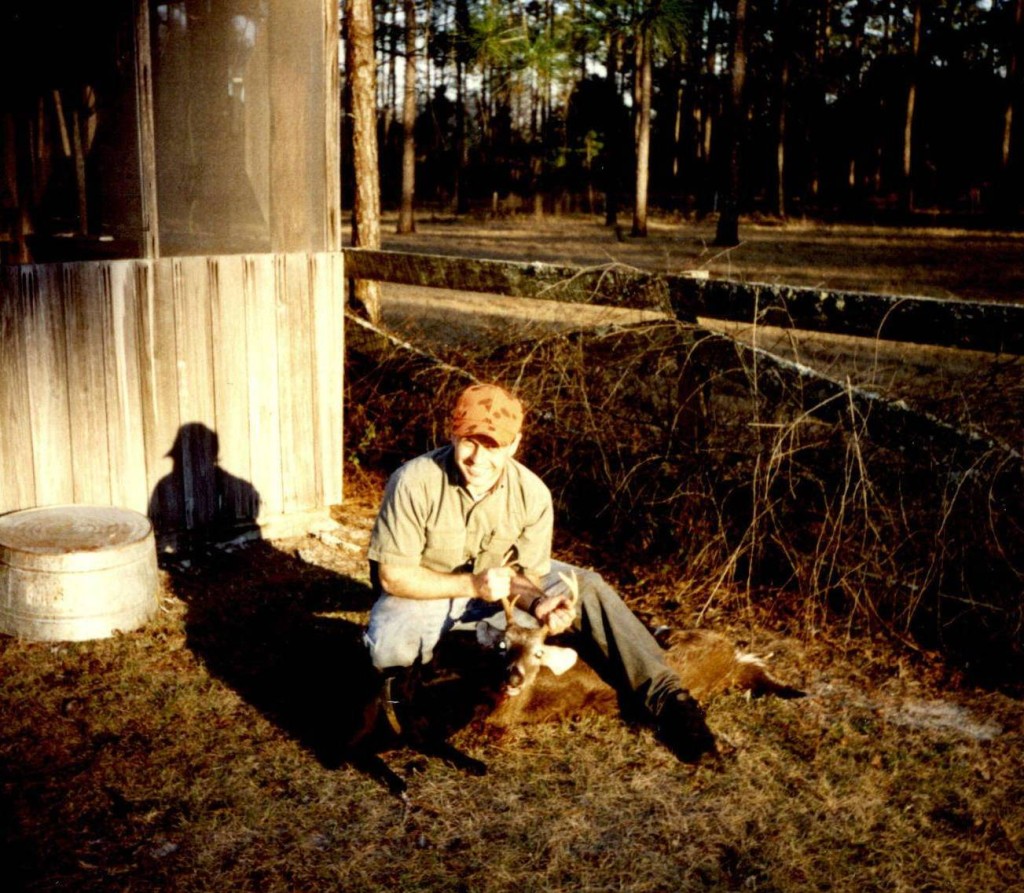 Chris Noble: I grew up hunting deer and later on, turkey. Between work and starting a family, I haven’t hunted in several years. Now that my son is getting older and expressing an interest, hope to start again this fall. Trips or the camping aspect was secondary then. It was about the hunt and meat in the freezer.
Chris Noble: I grew up hunting deer and later on, turkey. Between work and starting a family, I haven’t hunted in several years. Now that my son is getting older and expressing an interest, hope to start again this fall. Trips or the camping aspect was secondary then. It was about the hunt and meat in the freezer.
Although I do have many fond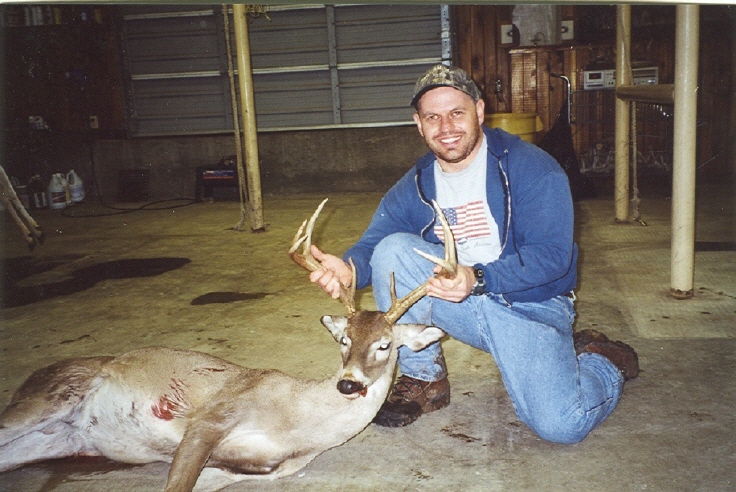 memories of ‘hunting’ (read loafing) in Farles Prairie in the Ocala National Forest. It is a large contiguous piece of forest, prairie and pond most hunters do not walk into, or at least not very far. I knew every acre of that tract, I just loved being there.
memories of ‘hunting’ (read loafing) in Farles Prairie in the Ocala National Forest. It is a large contiguous piece of forest, prairie and pond most hunters do not walk into, or at least not very far. I knew every acre of that tract, I just loved being there.
6. How much was your pack base weight on your last overnight trip?
Steve Watts: I gave up counting ounces by the end of the 70’s, but I was never a super-lightweight guy anyway. Thirty or even forty pounds or so was not unusual back then…and, I relished the loads…ah youth! It’s funny, I actually can go lighter these days with an 18th century frontier rig….around 10-12 pounds for an overnight in mild weather.
Chad Nech: Don’t remember my last single nighter but my most recent journey was a canoe trip and we had about 400 lbs I would estimate. It was quite a ride.
Chris Noble: Over 50 pounds, I drove — only in a Jeep. See question 8. 😉
7. Have you been offered the opportunity to film any TV shows related to your outdoor pursuits? If yes, have you thought of accepting them? If no, would you be interested in such an offer?
Steve Watts: I’ve done a number of public TV shows over the years and been involved with five History Channel programs in recent times. For each those, I felt good about the subject matter and had that old-fashioned idea of doing some kind of public service education (that also means not getting paid a dime, by the way—nor expecting it). But, things have sure changed of late. It’s almost harder nowadays to stay off TV than it is to get on it. I’ve made a number of producers unhappy recently expressing my opinions about so-called “reality” TV shows related to outdoor skills in some way.
Evidently, the presentation of skills is, in and of itself, not enough for the viewing public—extra drama is required. If it all generates an interest in outdoor pursuits, I suppose it’s all right…but, I’m not so sure.
Chad Nech: Never been offered a gig. I would more than likely prefer to be behind the DSLR than in front of it. If asked to be on a survival reality drama television show I would politely decline. I do have an interest in documentary style film making as of late and this may lead to a project in the future that focuses on skills, history, context, and real educators instead of entertainers all in an independent envelope.
Chris Noble: No and no. I am just not that interesting or good looking. But I would be a damn good producer and casting director. 😉
8. What is your preferred shelter system for winter trips?
Steve Watts: For deep/cold/north woods winter camping, the classic Classic Camping set-up is of course, the stove heated wall tent. David Wescott is the master of this style. For me, living in somewhat milder climes, my favorite fall/winter setup is some kind of open faced shelter…whether the “half faced” shelter of the frontier, or the Baker tent, the Campfire tent, the George tent, the Forrester or Whelen lean-to of the Golden Age. These shelters when properly matched with properly practiced firecraft represent the “free life in open air” at its best.
Chad Nech: In my experience the modern tipi and ultralight stove are the pinnacle of lightweight, one man, winter camping shelter system. In my area it’s a constant fight with wind in the winter so open face setups are reserved for spring/fall. Warren Miller’s ‘Forester’ configuration is the best of these in my opinion.
Chris Noble: I have gone through an evolution of learning the Super Shelter on my own and then directly from it’s inventor Mors Kochanski and one of his students, Cody Lundin. Putting all that together, it’s hard to beat the easy setup of the Harlton Hacienda, a Super Shelter variation. The Super Shelter gets my winter base weight to ~10 pounds. I prefer it for several reasons, but breathing in warm air all night is at the top of the list. I get more restorative sleep, even having to get up and tend the fire.
When not doing fire, a 10 x 10 tarp, tyvek ground sheet, and Big Agnes sleeping bag (< love this kinda modern technology) are my go to. Just picked up a NeoAir Mattress on sale and will give it a go next winter. On my wish list is a Whelen and Tentipi (for the family).
9. Are you a member of any outdoor organizations whether they be hunting, backpacking, etc?
Steve Watts: Society of Primitive Technology and Tin Can Tourists
Chad Nech: Land Of OZ Gathering
Chris: Currently the Georgia Conservancy and Society of Primitive Technology. I am also interested in Green Infrastructure and would participate in the right organization in my area looking for those solutions. The one environmental issue you rarely hear about is our fragmented landbase. A tough issue as there is a balance (in some cases) of private property rights and trying to create contiguous pieces of conservation land for water, wildlife, and recreation. While on the subject, I hate light pollution too.
10. Have you ever found yourself in a survival or emergency situation while in the woods, and if so, how did you cope?
Steve Watts: Besides being a might confused a time or two, and making a couple of stupid moves resulting in minor injuries, my only serious mishap was on an Outward Bound course in Linville Gorge, NC in 1972. The group had been hiking/bushwhacking all day with rain and drizzle and temperatures in the upper 50s/lower 60s. After a second river crossing, I was well on the way to hypothermia-land. The crew responded well when I could not. Thanks to all.
Chad Nech: Where do I start. It seems like I’m a magnet for this sort of thing. I’ve been struck by lightning, sucked in by undertow, broken limbs, crashed vehicles, been burned damn near alive a time or two, been lost for a few days, went through ice, plenty of heat related injuries, and just about anything else that could happen to the regular outdoorsman. I’m sure there are some pretty good stories to be shared with this question.
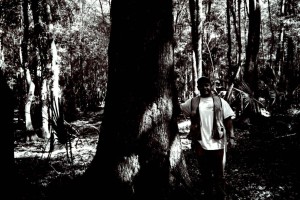 Chris: When working as a forester, I have been turned around a few times, stepped over and occasionally on my share of rattlesnakes and moccasins, had a couple close calls during the wildfires of 1998, got stung 100+ times by yellow-jackets once, destroyed (read burned) a four-wheeler on a prescribed-fire, and on more than one occasion stumbled on some illegal crops which could have been really bad.
Chris: When working as a forester, I have been turned around a few times, stepped over and occasionally on my share of rattlesnakes and moccasins, had a couple close calls during the wildfires of 1998, got stung 100+ times by yellow-jackets once, destroyed (read burned) a four-wheeler on a prescribed-fire, and on more than one occasion stumbled on some illegal crops which could have been really bad.
There were two times that stuck out for me though. The first time I was in my late teens hunting bottom-land near a rural highway. In fact it was a 5 mile wide strip of land between two highways. I climbed out of my tree stand after dark with a dead flashlight. I thought I was walking the right way (no compass) when I heard vehicle noise from the highway back to my left, so I went that way, then I heard it coming from another direction. The highway noise was echoing in the cypress ponds scattered around me, I was very confused. After walking in circles chasing the infrequent highway noise, I finally got a brief glimpse of headlights. Not so much of a close call as a good lesson about getting lost in the woods early in life that has always stuck with me. I trusted only one sense, my hearing, and ignored my gut. Bad call.
The other time I was bear-caught, a southern term for overheating. I was marking seed trees south of the Okefenokee Swamp in summer. Seed trees are those trees that appear genetically superior so we mark them not to be cut to reseed the forest. We were behind on this particular timber lease so we started thinning the property leaving every fifth row of pine to be judged later for seed trees. I was working alone in pretty much full sun, close to 100*, high humidity, no breeze, and having to climb over logging debris all day (made it 10x worse). I simply got too hot. My head was pounding, felt nauseous and when I made it back to the truck, I couldn’t get cooled off fast enough which scared the crap out of me. I still went to work the next day although didn’t feel near 100%. In 20+ years of professional work, I have only had one sick-day.
11. Why do you blog?
Steve Watts: My interests in almost anything having to do with outdoor skills has drawn me into the bloggy landscape. There’s some good and useful information to be found out there if you selectively poke around a bit. There’s also the danger of wandering around and getting lost or at least blogged down.
Chad Nech: I blog as a hobby. I enjoy writing and I love sharing part of myself in the form of art, photography, video, design, and the written word with as many people as I can. If someone picks up something useful or finds something they enjoy along the way, I’ve done my part as an artist.
Chris Noble: The intent of MasterWoodsman.com was not so much for me to be a blogger. It is an online repository of information where others share knowledge and in the case of those making their livelihood, promote their outdoor school, product or service. When I do write, I try to do so about skills and the things others are not. I feel we contribute more by taking this approach.
Here are the eleven blogs we are tagging and their questions below. Look forward to the answers!
The Blogs:
Camp and Trail X
Jack Mountain Bushcraft School
Tomahawk
The Woods Life
Woods Roamer
Living Primitively
DirtTime
Outdoor Self-Reliance
Ozark Mountain Preparedness
Voice in the Wilderness
Wranglerstar
The Questions:
- What is your favorite outdoor quote or saying and why?
- What knot do you use the most often and typically for what application?
- What is your favorite article (or book) that you have published on your blog or otherwise and why?
- Describe the best meal you have ever cooked in the woods.
- What is the farthest you have traveled for your outdoor hobby (or job) and where did you go and why?
- We have all had those nights where we froze. Not enough sleeping bag, got wet, lost, etc. What’s your worst story about being cold?
- Where is a place you would like to camp that you haven’t yet?
- If a friend came to visit you that had never been there before, where would you take them (outdoor related)?
- What’s your favorite natural navigation tip or trick?
- How did you learn the flora in your area you live or frequent most?
- Describe the outdoor related scene that you kick yourself the most about for not having a camera?


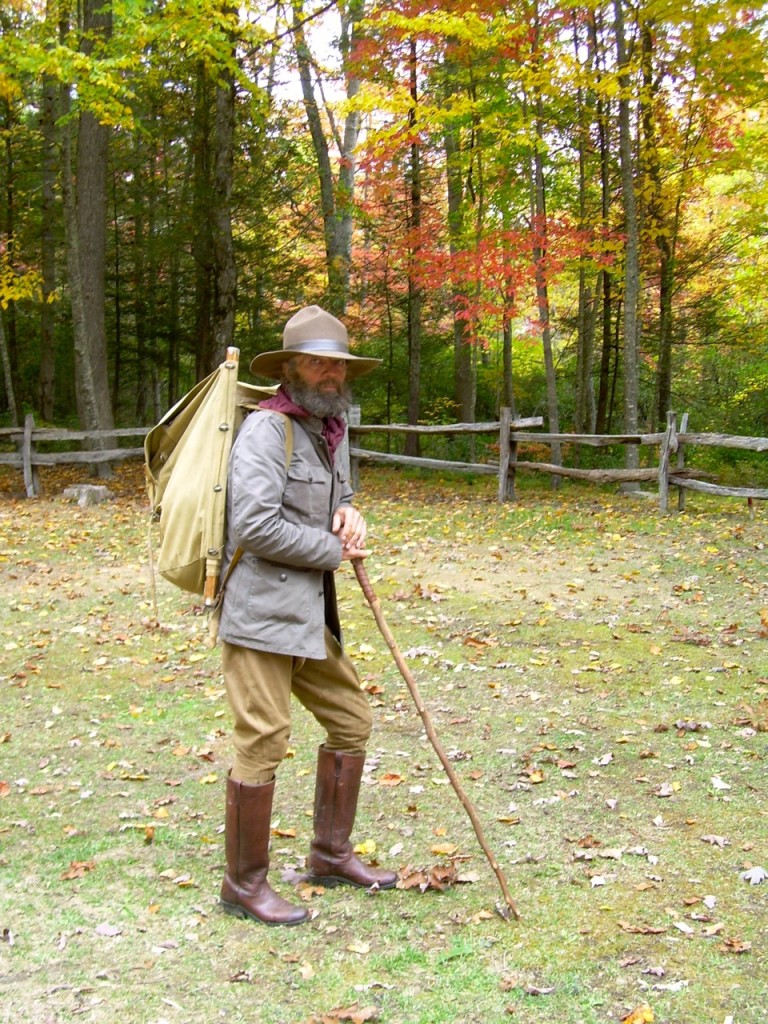
4 Responses to The Liebster Award